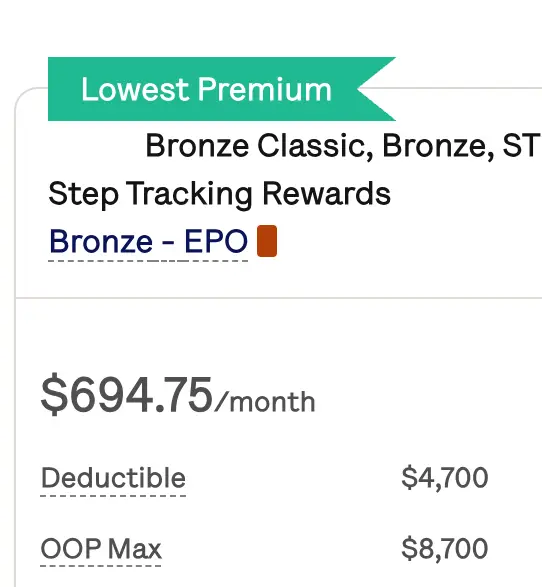Catastrophic Health Insurance: The Ultimate Guide & Best Options
Catastrophic Health Insurance: The Ultimate Guide & Best Options
Catastrophic health insurance protects you financially in case of an unexpected major injury or illness. It is a basic, inexpensive health insurance plan option with a low monthly premium and a high deductible. To purchase these plans you must be under 30 years old or qualify for a hardship exemption, proving you can’t afford regular health insurance.
In addition to catastrophic health insurance, it is a good idea to have coverage for preventative care, reduced prescription drug prices, and routine doctor’s visits to maintain your health. With Mira, this is made possible for a small monthly flat fee of $45 per month. Consider pairing Mira with catastrophic health insurance today so that you don’t have to go without basic healthcare
What is Catastrophic Health Insurance
In case of an unanticipated event, catastrophic health insurance is an affordable way to protect yourself from extreme medical expense debt. A “catastrophic injury or illness” often requires prolonged hospitalization or treatment for a severe medical issue that can amount to tens of thousands of dollars in care.
Catastrophic health insurance can be seen as an in-case-of-emergency insurance plan. While you’ll be covered for extreme events, you will pay basic healthcare needs out of your own pocket. The high deductible makes it difficult to reach without a catastrophic event, so these plans are not for people who anticipate needing to go to the doctor very often.
How a Catastrophic Health Insurance Works
With a catastrophic health insurance plan, you pay 100% of your medical expenses out-of-pocket (OOP) until you reach a very high deductible, around $8,000. Once you hit the limit, then your insurance company pays for all covered services with no copays or coinsurance. The problem with this is it can be deterring for enrollees to attend doctor’s appointments or go to urgent care since you will have to pay upfront.
One of the main reasons people choose to pair catastrophic health insurance with non-insurance products, like Mira, is so they can be protected in an emergency and also have affordable access to other healthcare services to stay healthy. Preventative services are important to your overall health, making Mira an attractive combination with these plans.
Who Can Purchase Catastrophic Health Insurance
Only certain people are eligible to enroll in a catastrophic health insurance plan. When purchasing a plan through the Marketplace, you will see them displayed if you qualify. Individuals who are eligible include:
- People under 30
- People who are unable to afford health insurance, and qualify for a “hardship exemption”
Hardship Exemption
If you are 30 or older and want a catastrophic health insurance plan, you must apply for a hardship exemption. If the lowest cost Marketplace plan is more than 8.16% of your annual income, healthcare coverage is considered unaffordable, and you may qualify for an exemption. Some common hardship exemptions include:
- If you were homeless
- If you were evicted
- If you experienced the death of a family member
- If you filed for bankruptcy
- If you experienced domestic violence
- If you had medical expenses that left you in substantial debt
- If you are ineligible for Medicaid because your state did not expand Medicaid eligibility
- If you experienced a natural disaster that caused damage to your property
How to Apply for a Hardship Exemption
In order to obtain an official hardship exemption, there are specific steps you need to take:
- Step 1: On healthcare.gov you can find the forms to apply for a hardship exemption.
- Step 2: Based on your specific circumstances, you will be approved or denied

Get affordable doctor copay without paying insurance premiums
Join 39,000 people and get Mira, the best alternative to traditional insurance. Enroll and use immediately. Plans start at only $45/mo.
Alexis Bryan MPH, is a recent graduate of Columbia’s Mailman School of Public Health. She is passionate about increasing access to care to improve health outcomes. Outside of work, she loves to travel, read, and pay too much attention to her plants.
